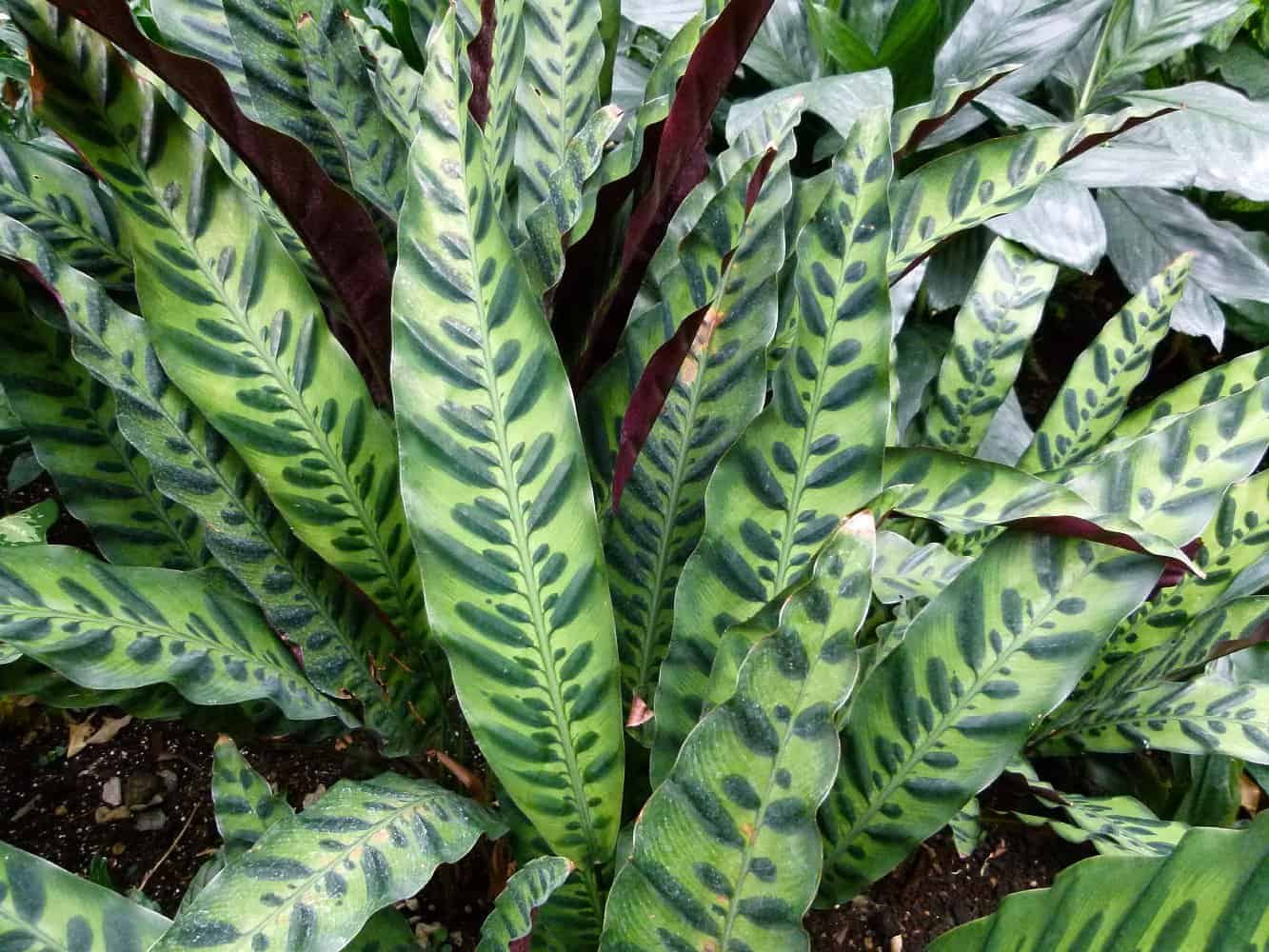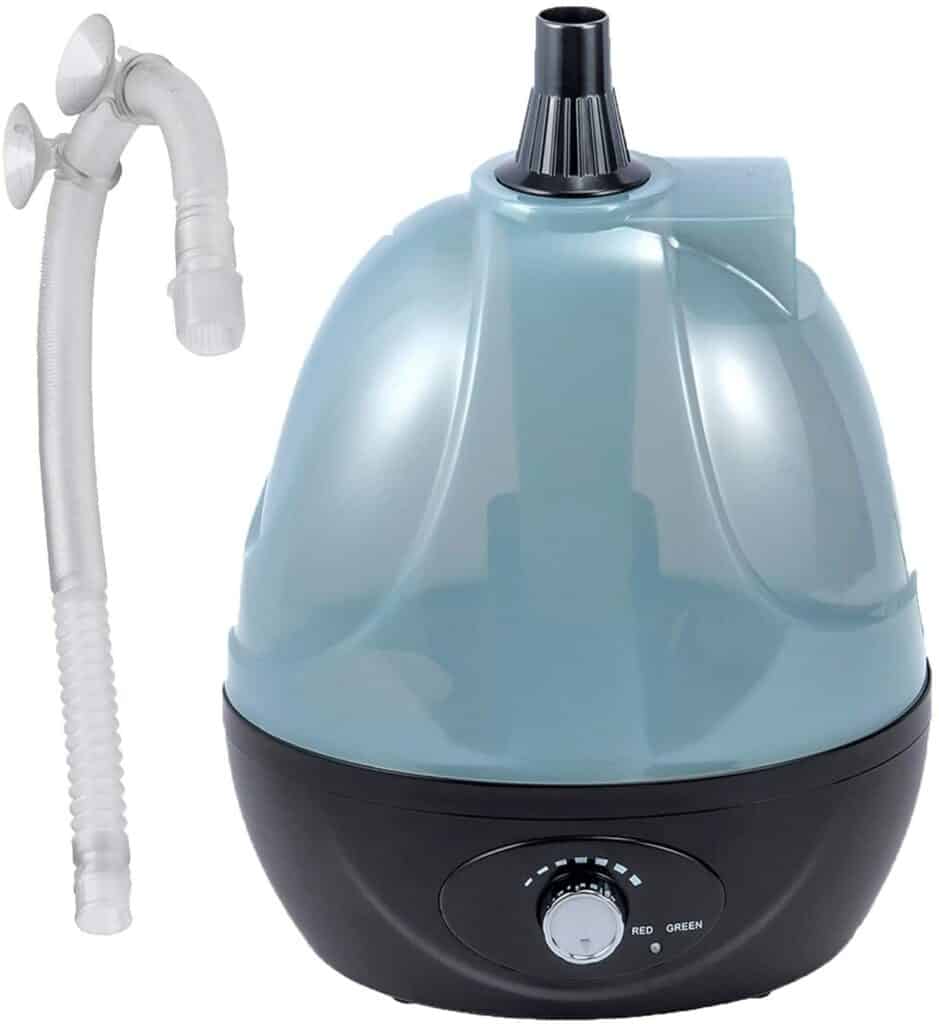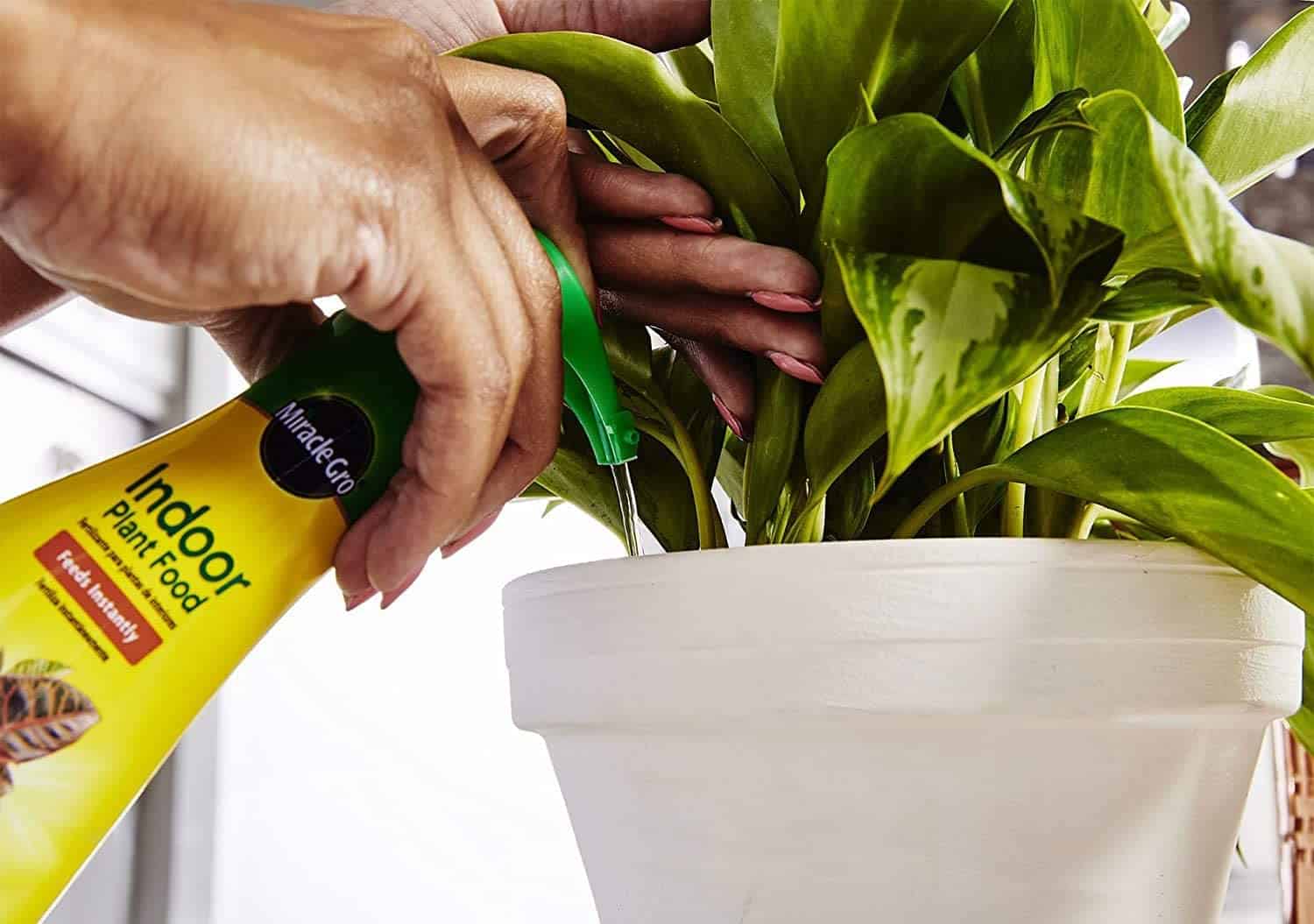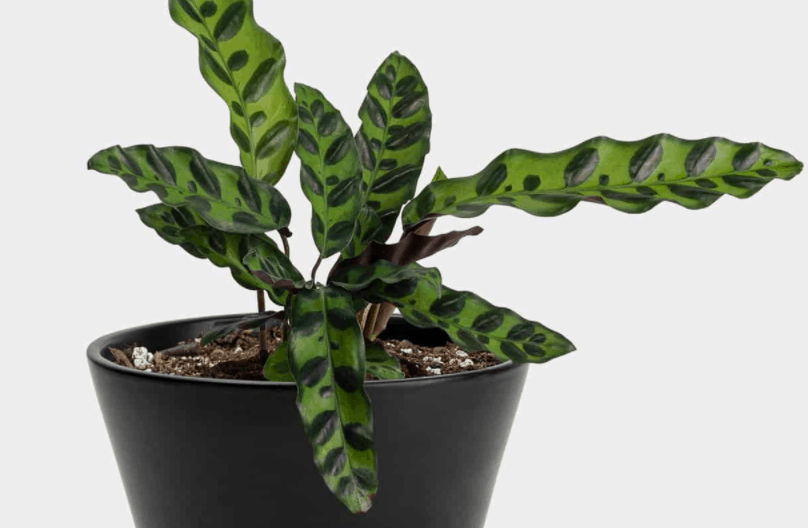- Ficus Pumila: Is This Vining Plant Too Needy For Your Time? - August 29, 2021
- Peperomia Frost: Why Peperomia Caperata Is The Perfect Indoor Plant - August 19, 2021
- Wax Begonia: Can Begonia Semperflorens Survive At Home? - August 18, 2021
The Calathea Lancifolia, otherwise known as ‘the rattlesnake plant’, is a hugely popular houseplant. This Calathea Lancifolia gets its nickname from the unique texture and pattern on its leaves. While it might not be the easiest plant to look after, the Calathea Lancifolia’s stand-out appearance makes this high-maintenance potted plant worth the hard work.
In this post, we’re sharing the reasons behind this potted plant’s popularity, so you can decide if it’s the ideal plant for your home.
How to Identify Calathea lancifolia
Just like its Calathea siblings, the Calathea Lancifolia is easiest to identify by its leaves. The Calathea Lancifolia has the same long, shiny leaves as the Calathea Freddie and Calathea Dottie, but with its unique pattern and shape.
Calathea Lancifolia has wavy leaf edges with a mix of dark and light green shades. The varied color palette and striped pattern of the Calathea Lancifolia leaves earned the plant its nickname ‘rattlesnake’.
The Calathea Lancifolia can grow up to 30″ tall!
How to Grow Calathea Lancifolia From Seed
- The Calathea Lancifolia needs to be grown in a small pot or propagation tray.
- Mix a 1:1 mixture of peat and coarse sand.
- Moisten the soil with filtered water before positioning the Calathea Lancifolia seeds 0.5-1 cm deep in the soil
- The Calathea Lancifolia is a tropical plant. This means, if you don’t live in a naturally humid climate, you need to cover the tray or pot in plastic wrap or under a well-fitting propagation cover.
- Position the pot or tray in indirect sunlight.
- Frequently check the soil to ensure it remains moist
- When the plants reach 3-4 cm, they need to be potted in individual pots.
How to Propagate Calathea Lancifolia

The Calathea Lancifolia can be grown using propagation. To propagate your Calathea Lancifolia plant, follow these steps:
- Water a few days before you’re planning on taking clippings for propagation.
- Remove the Calathea Lancifolia plant from its pot, being careful not to damage it.
- Separate the root system with a sharp, clean cut.
- Make sure the Calathea Lancifolia you’re propagating from is large enough with enough root to clip from
- Each cut of the root system needs to be attached to a stem
- Once you’ve successfully removed the root, you can re-pot it in fresh soil and a new pot.
Calathea Lancifolia Growing Conditions
The Calathea Lancifolia is a tropical plant, and therefore, has acquired a reputation for being fussy. Although the Calathea Lancifolia might demand more attention, if you know how to care for this plant properly, you shouldn’t have any problems.
Tropical plants enjoy warm, indirect sunlight with high humidity levels and frequent watering. Optimum growing conditions are those similar to the Calathea Lancifolia’s native tropical environment.
If you live in a low humidity climate, you might want to consider investing in a humidifier. Similarly, if you live in a cold environment, you need to ensure you’re seeking out the warmest and brightest spots in the day for the Calathea Lancifolia.
How to Plant Calathea Lancifolia

The hardest part of caring for a Calathea Lancifolia is its day-to-day maintenance. The planting requirements for the Calathea Lancifolia are pretty simple.
Calathea Lancifolia Potting & Soil

Tropical plants require well-draining soil due to the high quantities of water they demand. Pair your well-draining soil with a draining pot to ensure your Calathea Lancifolia isn’t at risk of being over-watered.
Calathea Lancifolia Water Requirements
The Calathea Lancifolia is a thirsty plant. It’s crucial the soil your Calathea Lancifolia is in remains moist. To ensure this, water every week to ten days. Before watering, feel the top of the soil to tell if your Calathea Lancifolia needs watering.
Calathea Lancifolia Light Requirements
Water and soil are pretty easy to understand and provide when caring for a Calathea Lancifolia. The light requirements of this warm-climate plant can be a little more tricky. Being tropical, the Calathea Lancifolia requires significant light exposure and high temperatures. However, like all potted plants, direct sunlight can give your plant sunburn.
To best provide for your Calathea Lancifolia, try to seek out warm, bright spots of indirect sunlight in the home. Partial sunlight exposure is fine, just make sure to move your plant if it’s spent too long sitting under a bright sun.
Best Calathea Lancifolia Fertilizer

The Calathea Lancifolia doesn’t require fertilizer to grow healthy and happy. However, some people choose to fertilize their Calathera Lancifolia during the growing season to help assist their plant’s development. Using a half-strength liquid fertilizer once a month in spring and summer can promote healthy foliage. Make sure not to fertilize your plant’s leaves as this can cause sunburn.
Best Calathea Lancifolia Companion Plantings
If you enjoy taking care of the Calathea Lancifolia, you’ll enjoy the company of other Calathea species. The Calathea Lancifolia likes being surrounded by its other tropical varieties, including the Calathea Dottie and Calathea Freddie.
If you’re lucky enough to live in a warm climate, you can grow Calathea Lancifolia plants outside. If you have Calathea Lancifolia in your garden or outside area, you can surround them with other tropical plants that enjoy the same growing conditions.
One of the best things about the Calathea Lancifolia is it is suitable for anyone and everyone. The Calathea Lancifolia is non-toxic and suitable for children and pets.
Calathea Lancifolia Diseases and Common Problems
If you look after your Calathea Lancifolia correctly, you shouldn’t encounter any problems. Still, when not looked after correctly, you might encounter some of the following issues:
Drooping Leaves
Drooping leaves signals your Calathea Lancifolia is dehydrated. To resolve this issue, bath your Calathea Lancifolia in a body of water. Let the plant dry naturally before watering it again. Once the plant has dried, you can re-pot using fresh soil.
For extra hydration, you can mist your Calathea Lancifolia using a plant mister and clean water.
Limp Stem
A limp stem is usually an indication that your Calathea Lancifolia is too cold. Try moving your Calathea Lancifolia to a warmer area in your home, with better sunlight exposure.
Brown Leaves
Brown leaves suggest the Calathea Lancifolia isn’t getting the proper nutrients. If the leaves on your Calathea Lancifolia are browning, try using a water purifier to remove salts and minerals from your tap water.
You can also try using a tropical plant fertilizer to provide extra nutrients.
Pests
Pests can appear on any plant. Houseplants are notoriously bad for attracting and spreading pests, as many plant owners forget to move their infected plants away from each other.
If your Calathea Lancifolia has pests, you can remove them using a heavy stream of water or a chemical pest remover. We recommend using the non-toxic method first and progressing with chemicals if this fails.
Calathea Lancifolia Treatments and Maintenance

Calathea Lacifolia doesn’t demand complicated or extensive treatment. However, its fussy nature makes it a medium-high maintenance plant to take care of. A tropical fertilizer, water purifier, and humidity machine are the best tools to have on hand for treating a Calathea Lancifolia.
Where to Buy Calathea Lancifolia Seeds Online
Calathea Lancifolia seeds aren’t prevalent, so if you find some, make sure to take extra care during the growing process! A few places you can pick up Calathea Lancifolia seeds online include:
- Green Seed Garden (mixed Calathea seeds)
- eBay (mixed Calathea seeds)
Where to Buy Mature Calathea Lancifolia Online
If you’d rather skip the intense growing process, you can purchase your Calathea Lancifolia mature. Here are a few places to pick up this beautiful plant species online:
FAQs
Question: How often should I water the Calathea Lancifolia?
Answer: When it comes to watering, you need to use a bit of your initiative! The Calathea Lancifolia enjoys lots of water and requires moist soil at all times. However, there is still a risk of overwatering and harming this thirsty plant. The best way to know when you should water the Calathea Lancifolia is to feel its soil and decide if it’s still moist or needs topping up with fresh water.
Question: Should I mist the Calathea Lancifolia?
Answer: If you live in a low-humidity environment, misting your Caltahea Lancifolia is a good idea. Misting keeps your plant hydrated and promotes healthy foliage.
Question: Should I cut off brown leaves?
Answer: Yes, just like with other plants, the Calathea Lancifolia requires pruning of its dead leaves. Gently cut away brown, dying leaves from the stem of your Calathea Lancifolia. Cutting away dead foliage increases the health and growth prospects of the Calathea Lancifolia.

